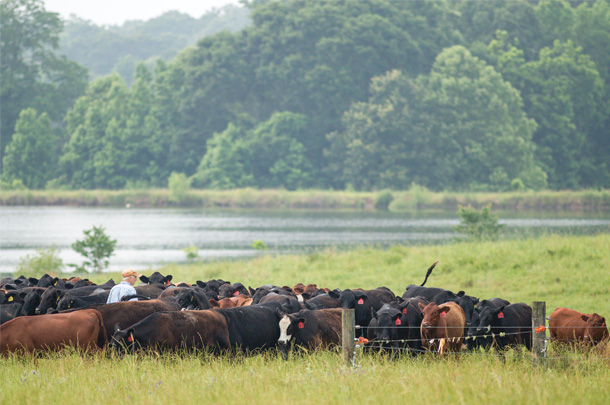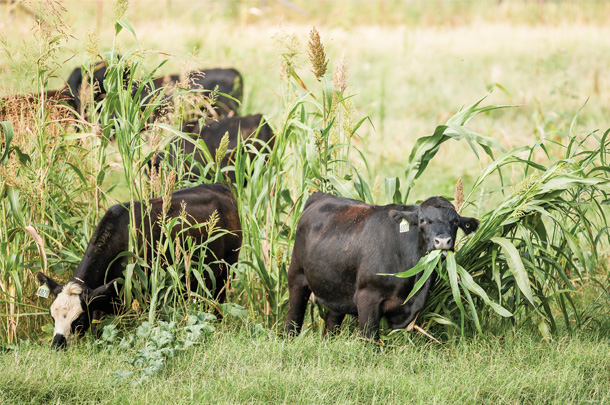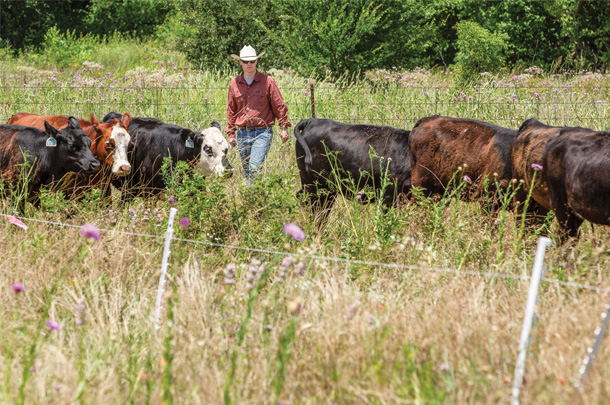After reading an article written by Dallas Mount, CEO of Ranch Management Consultants, titled “Biggest Mistakes in Grazing Management” dated August 25, 2021, I was inspired to write this article about the keys to successful regenerative grazing management. Although we learn from our mistakes, we don’t want the cost of the education to be expensive. The same is true with grazing management.
In this article, we will examine the mistakes listed by Dallas (not in the same order) and elaborate on how to build toward successes.
1. Match stocking rate to carrying capacity
Stocking rate is a measure of demand, and carrying capacity is a measure of supply. Carrying capacity changes with the seasons and from year to year. Therefore, it is important to adjust stocking rate at least annually as conditions change.

Carrying capacity, or forage production, is highly correlated with rainfall, and both rainfall and forage production should be monitored at critical dates. An important pattern to know is the forage production curve corresponding with the annual monthly rainfall for your area. In the southern Great Plains, for example, we would generally expect about 40% to 45% of annual precipitation to occur from October through March (the dormant season). If our dormant season precipitation is below average, early spring forage production could be slow at greenup.
During the spring season (April through end of May), we expect 35% to 40% of our rainfall for the year. If spring rainfall is not favorable, forage production will be less than in a normal year. If both dormant season precipitation and spring rain are well below average, a very unfavorable growing season is likely. For the entire period from October through June, about 75% to 80% of the annual precipitation occurs. By end of June, we would expect about 65% to 70% of our annual forage production to be produced.
Producers should track and stay aware of moisture conditions during the dormant season and early growing season to determine whether the year will be a favorable or unfavorable one for forage production. This allows you to adjust your stocking rate accordingly. Assess pasture moisture conditions at the beginning of the growing season and monitor closely throughout the spring, then be prepared to make adjustments in stocking rate based on rainfall and forage production. By September, about 90% of the forage production will have occurred, and we must make it last into spring greenup the next year. Continually matching stocking to carrying capacity is an important element for successful regenerative grazing.
2. Minimize the number of herds
To effectively manage grazing (timing, frequency, intensity and duration), the number of paddocks per herd is an important variable. The more paddocks per herd, the more effectively we can manage the grazing. The most effective means to do this is to reduce number of herds you are managing and moving. One also can increase the paddocks per herd by subdividing existing pastures to build more paddocks, but that comes at a cost. To effectively manage regenerative grazing, it usually requires at least 15 paddocks per herd with the ability to subdivide those with temporary fences.
One key consideration when running a large herd is livestock drinking water. Often, you may need to improve stock water to deliver water to large herds throughout the year. This is usually one of the most cost-effective improvements one can make in a regenerative grazing operation.
3. Ensure adequate recovery periods
Plants need rest and recovery following grazing, fire or other disturbance. Depending on the time of year of the disturbance, recovery will vary. During favorable growing conditions, recovery is more rapid. During unfavorable growing conditions, recovery is slow. Over the dormant season, recovery is on hold until spring.

Ideally, we would like to allow all pastures or paddocks to attain “full flush” conditions, to completely reach its full production potential for the season before being grazed. This allows plants to build healthy roots and energy reserves prior to re-grazing, which allows for more rapid recovery. Severity of graze – the amount of plant removed during grazing – also influences recovery period. Adequate residual is always preferable, applying the “take half, leave half” rule whenever possible. Top-grazing (taking one-third or less of leaf material) is ideal during the active growing season to allow for the most rapid recovery of grazed plants. In regenerative grazing management, pasture plants need full recovery following each grazing event.
4. Manage for short graze periods
Livestock graze preferentially, selecting more palatable plants in the pasture over those which are less palatable. The regrown portion of palatable plants is even more palatable and, given the opportunity, livestock will re-graze plants when fresh growth is present. The repeated re-grazing of grazed palatable plants prevents rest and recovery from occurring. Over time, this leads to the loss of the more palatable species, which also are usually the most productive species.
During the growing season in the southern Great Plains, most plants start to regrow after three to four days of being grazed. If livestock are re-grazing plants during a grazing event, graze periods need to be shorter. Ideally, with regenerative grazing, livestock would be moved out of a grazed pasture within three to four days (preferably every one to two days) during the active growing period and within five to six days during conditions of slower growth (summer, for example).
It is much easier to manage for short graze periods if there are 15 or more paddocks per herd than if there are fewer paddocks. This number of paddocks also complements the need to provide adequate recovery of grazed plants as well. To be most effective in regenerative grazing, the more paddocks the better, and temporary fencing makes this possible at a low cost.
5. Effectively apply higher stock densities
Most pastures experience overgrazing and undergrazing in the same pasture, even if rotational grazing is in practice. This occurs when livestock are selectively grazing within a pasture or paddock at a stock density too low to change their grazing behavior. Stock density is the number of animals per acre during a given grazing event and is often expressed in live-weight pounds per acre.
Stock density is influenced in two ways. The first is placing more animals into a herd, and the second is by making the grazing paddock smaller. With higher stock densities, livestock behavior changes, in that the grazing animals graze more uniformly and less selectively. This way, they utilize the less-palatable plants as well as the more palatable. This is an important concept with regenerative grazing.
High stock densities create a competitive grazing behavior within the herd, as livestock select from a greater diversity of plants during each grazing event. In addition, higher stock densities more effectively build soil health. With more uniform grazing, there is more uniform distribution of feces and urine across grazing paddocks.
There is also a greater beneficial trampling effect with higher stock densities. With greater livestock concentrations, the ungrazed less- palatable and less-digestible plant material can be placed on the soil surface to become insulating residue as well as litter that is food for soil macroorganisms such as earthworms and nematodes. They digest the material and make it more available to feed both microorganisms and plants as they continue to build soil health and regenerate the soil. In addition, on bare soil, livestock hoof action at higher stock densities can break soil crusts, enabling new plant recruitment with favorable moisture conditions.
6. Apply proper stockmanship skills
Proper stockmanship applies to more than practicing low-stress handling and working pen activities. It also applies to managing and handling livestock in pastures and during paddock moves as part of regenerative grazing. It is important to train naïve livestock to the grazing management on your operation. It takes time and patience to acclimate cattle to the presence of people, horses, ATVs and other equipment. Both we as managers and our ranch employees need to be able to “read” our livestock – their grazing behavior, movements, rumen fill, health and general comfort.
 Training naive cattle to your operation’s grazing management is critical. Photo by Rob Mattson, Noble Research Institute.
Training naive cattle to your operation’s grazing management is critical. Photo by Rob Mattson, Noble Research Institute.
The more comfortable the livestock are with grazing management, the better they will perform. This requires us to have a good understanding of flight zones and pressure points, and to be able to identify lead animals and those more timid and excitable. Stockmanship is a continually developing skill. Learn from stockmanship experts, and spend time with your animals, observing their behavior during grazing and loafing periods. You’ll soon have the stockmanship skills you need for successful regenerative grazing management.












